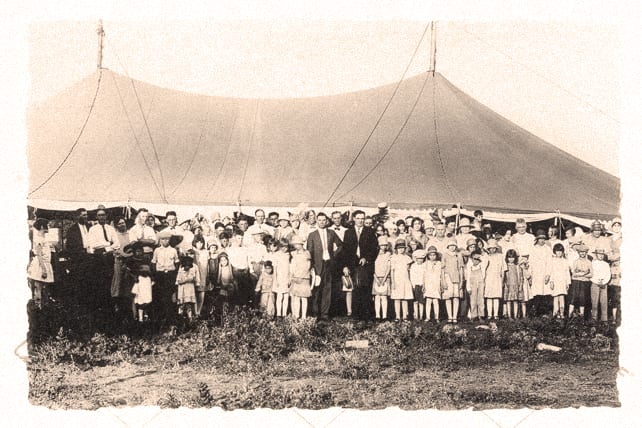In describing what happened in Jonathan Edward’s Northampton, Mass., church in 1734, observers said, “It pleased God ..to display his free and sovereign mercy in the conversion of a great multitude of souls in a short space of time, turning them from a formal, cold and careless profession of Christianity, to the lively exercise of every Christian grace, and the powerful practice of our holy religion.” [1] That’s about as clear a definition as we’ll ever get! During a spiritual revival, God supernaturally transforms believers and nonbelievers in a church, locale, region, nation or the world through sudden, intense enthusiasm for Christianity.2 People sense the presence of God powerfully; conviction, despair, contrition, repentance and prayer come easily; people thirst for God’s word; many authentic conversions occur and backsliders are renewed.
Revival and awakening are, generally, synonyms. The larger the geography a revival covers, the greater the tendency to call it an awakening.
America has a deep, rich history of revivals and awakenings.
Spiritual Revival in America: A Well-Travelled Road
The Great Awakening, 1734-43. In December 1734, the first revival of historic significance broke out in Northampton, Mass., where a young Jonathan Edwards was pastor. After months of fruitless labor, he reported five or six people converted—one a young woman. He wrote, “[She] had been one of the greatest company-keepers in the whole town.”3 He feared her conversion would douse the flame, but quite the opposite took place. Three hundred souls converted in six months—in a town of only 1,100 people!4 The news spread like wildfire, and similar revivals broke out in over 100 towns.5 Starting in Philadelphia in 1739, George Whitfield’s dramatic preaching was like striking a match to the already-underway awakening. An estimated 80 percent of America’s 900,000 Colonists personally heard Whitfield preach.6,7 He became America’s first celebrity.8
The Second Great Awakening, 1800-1840. In 1800, only one in 15 of America’s population of 5,300,000 belonged to an evangelical church.9 Presbyterian minister James McGready presided over strange spiritual manifestations in Logan County, Ky. The resulting camp meeting revivals drew thousands from as far away as Ohio.10,11 Rev. Gardiner Spring reported that for the next 25 years not a single month passed without news of a revival somewhere.12 In 1824, Charles Finney began a career that would eventually convert 500,000 to Christ. An unparalleled 100,000 were converted in Rochester, N.Y., in 1831 alone—causing the revival to spread to 1,500 towns.13 By 1850 the nation’s population exploded fourfold to 23,000,000 people, but those connected to evangelical churches grew nearly tenfold from 7 percent to 13 percent of the population—from 350,000 to 3,000,000 church members!14
The Businessmen’s Revival of 1857-1858. In 1857, the North Dutch Church in New York City hired a businessman, Jeremiah Lanphier, to be a lay missionary. He prayed, “Lord, what would you have me do?” Concerned by the anxious faces of businessmen on the streets of New York City, Lanphier decided to open the church at noon so businessmen could pray. The first meeting was set for September 23—three weeks before the Bank Panic of 1857. Six attended the first week, 20 the next, then 40, then they switched to daily meetings. Before long all the space was taken, and other churches also began to open up for businessmen’s prayer meetings.15 Revivals broke out everywhere in 1857, spreading throughout the United States and world. Sometimes called The Great Prayer Meeting Revival, an estimated 1,000,000 people were added to America’s church rolls, and as many as 1,000,000 of the 4,000,000 existing church members also converted.16












